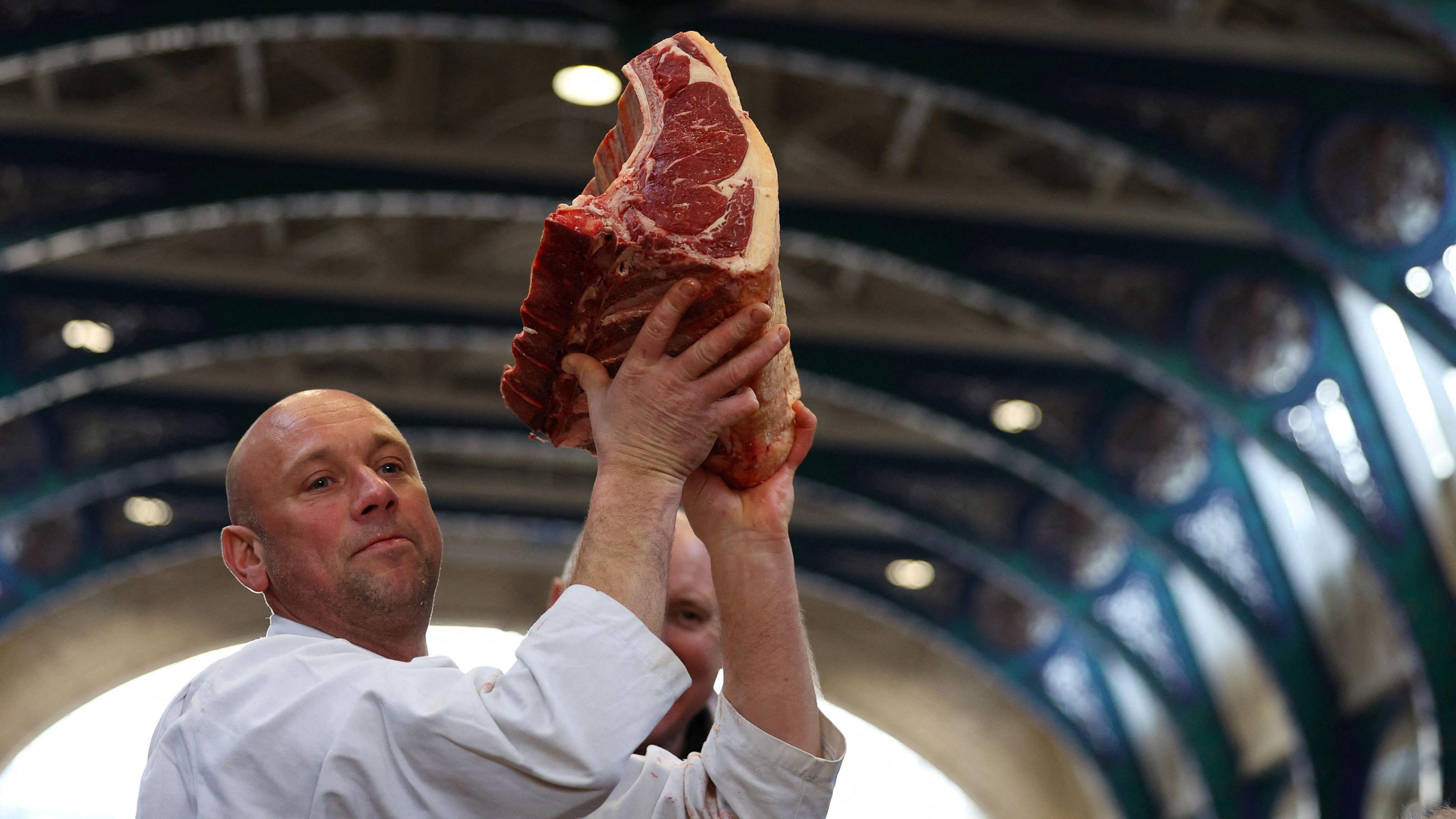'It's another London tradition that will go'
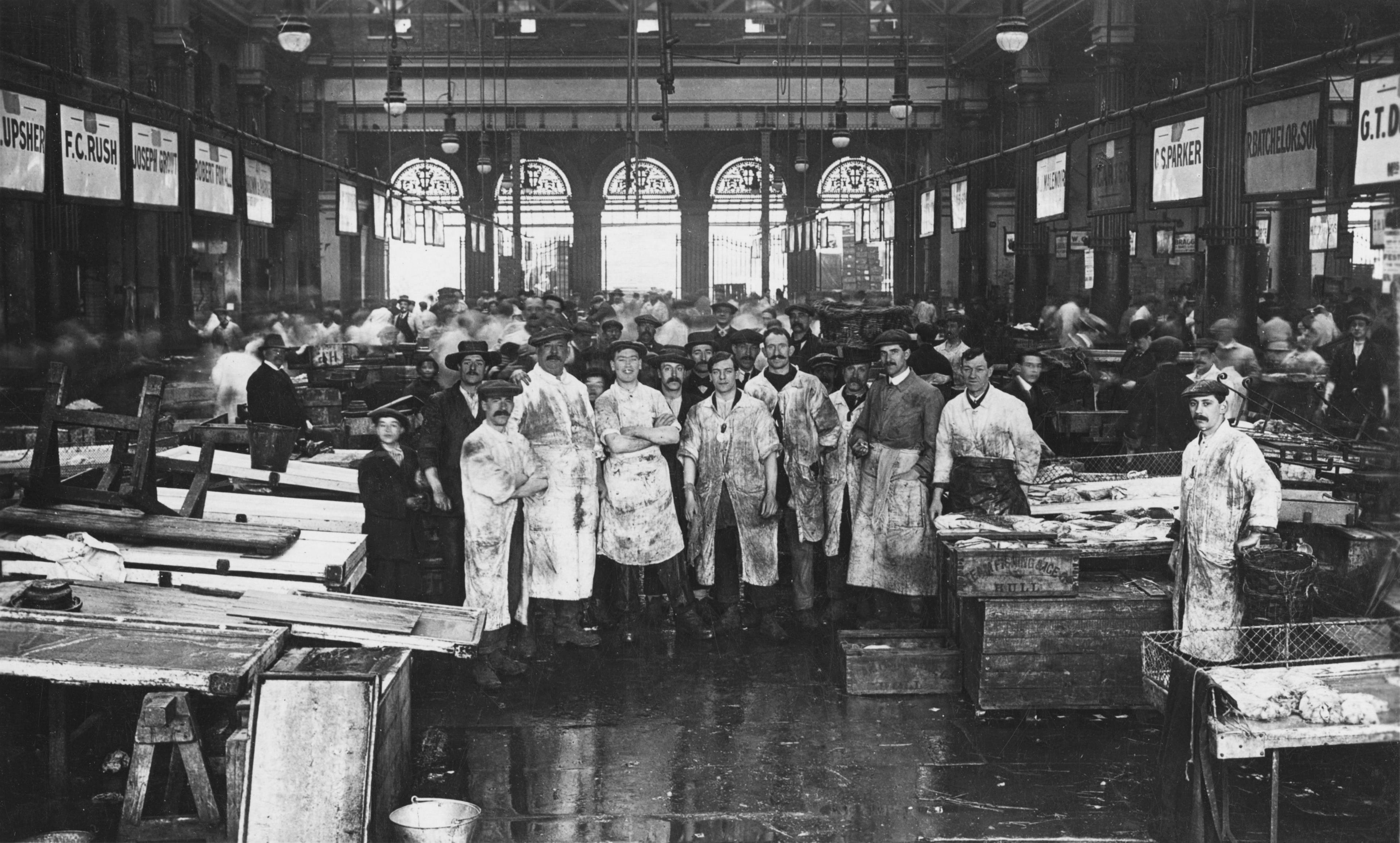
Before it was moved to Poplar in east London, Billingsgate Fish Market was based in the City on the banks of the Thames
- Published
London's historic Smithfield and Billingsgate markets are set to shut after the City of London Corporation voted to withdraw support for them, bringing down the curtain on two establishments that have been part of London life for the best part of a millennium.
Originally based just outside the medieval city walls, Smithfield has hosted a market since at least the 12th Century.
With its wide expanse of fields - the name Smithfield is thought to have come from the Old English "smeeth field", which described the flat, open area that spread out to the River Fleet - animals would be kept there for fattening before being sold and slaughtered.
It was mentioned in a text by clerk William Fitzstephen in 1174 who described how "every Friday there is a celebrated rendezvous of fine horses to be sold… [pigs] with deep flanks, and cows and oxen of immense bulk".
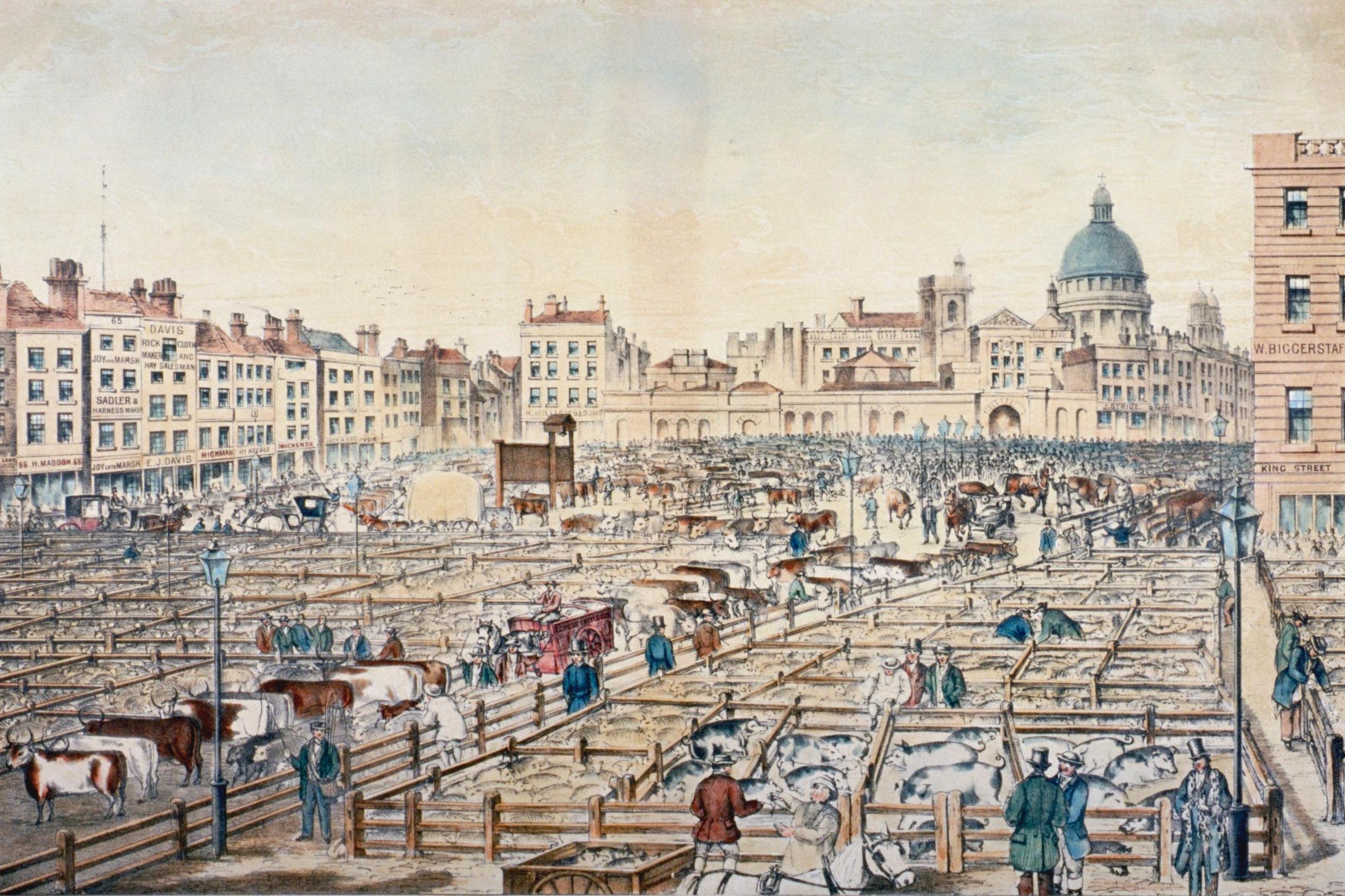
Smithfield Market started out as a site for livestock sales, with animals being brought into the middle of the City
Market rights were subsequently granted to the City of London by Edward III in 1327 and, over the centuries, the livestock market remained in place as London expanded around it.
In 1726, Daniel Defoe hailed it as being "without question, the greatest in the world", but by the 1800s the combination of live animals in a rapidly growing city was proving objectionable to some Londoners.
Charles Dickens was among those to moan about the mess, writing in Oliver Twist in the late 1830s how it had become a place where "countrymen, butchers, drovers, hawkers, boys, thieves, idlers, and vagabonds of every low grade, were mingled together in a mass".
Market mornings, Dickens wrote, saw the ground "covered, nearly ankle-deep, with filth and mire", while "the bleating of sheep, the grunting and squeaking of pigs… the shouts, oaths and quarrelling on all sides… rendered it a stunning and bewildering scene".
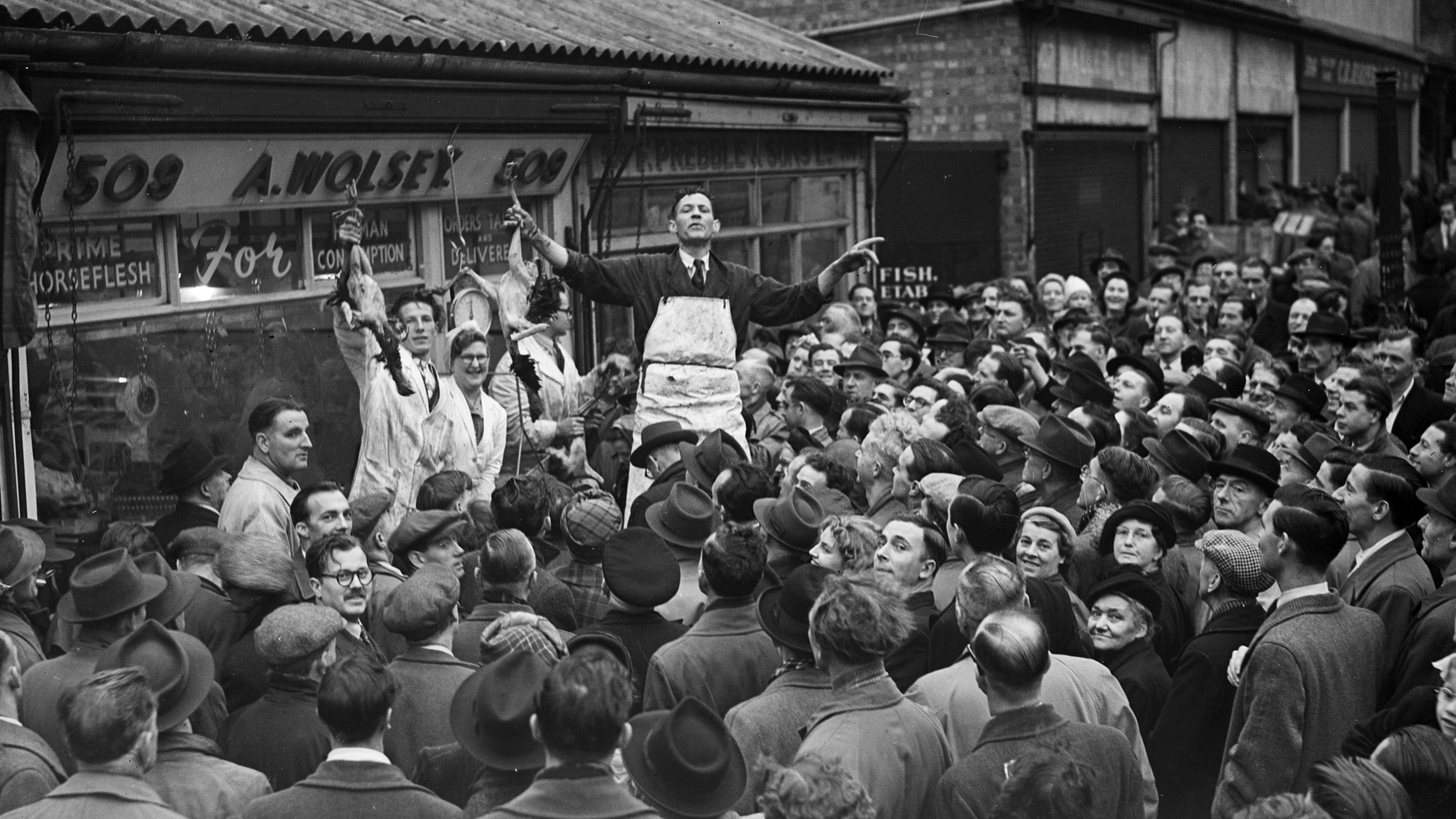
An auction is held on Christmas Eve each year to sell off any remaining meat
By the 1850s, the cacophony and cowpats had proved too much and an act of Parliament was passed to shut the livestock market, with a replacement opened in Islington in 1855.
To fill the space in Smithfield, a grand wholesale meat market was built for traders to process animal carcasses, which would then be sold primarily to shops and restaurants.
Designed by Horace Jones, the man behind Tower Bridge, the massive development featured an underground freight railway to bring in huge amounts of produce, along with other cutting-edge technology, much of which is now being rediscovered.
The Times reported the new market opened at 03:00 on the first day, with its reporter purring at the "fine show of meat and poultry" that was on display.
Further buildings were added over the following decades with Smithfield handling huge amounts of meat, some of which was imported from across the globe.
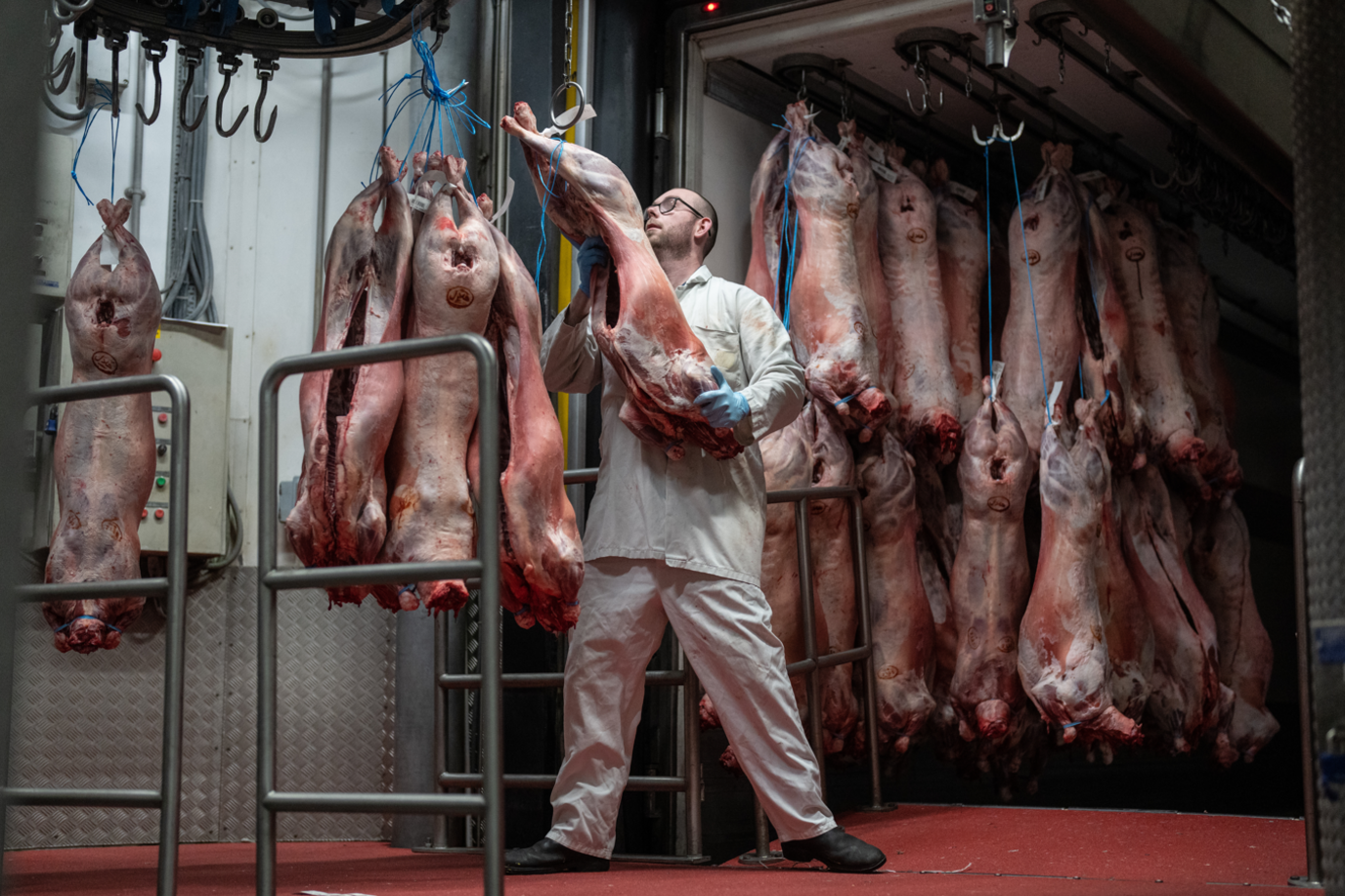
Today, 42 meat-trading premises are based at Smithfield - significantly fewer than during the market's heyday
A unique atmosphere developed in the male-dominated arena, with generations of the same families joining the working ranks. Roles were split into strict divisions with strange-sounding job titles.
There were puller-backs who pulled the meat off the lorries when carcasses arrived at the market then put them on the backs of pitchers, who would carry them into shops to be hung on hooks.
Humpers lopped meat on to the scales, which were looked after by the scales-man, before bummarees - porters - carried the purchased meat out to waiting vans.
Traditions formed over the years, such as initiation ceremonies that saw new workers stripped naked, put on a trolley and pelted with rotten food, offal and blood, while "meat races" would involve workers running through the hall with giant sides of beef across their shoulders.
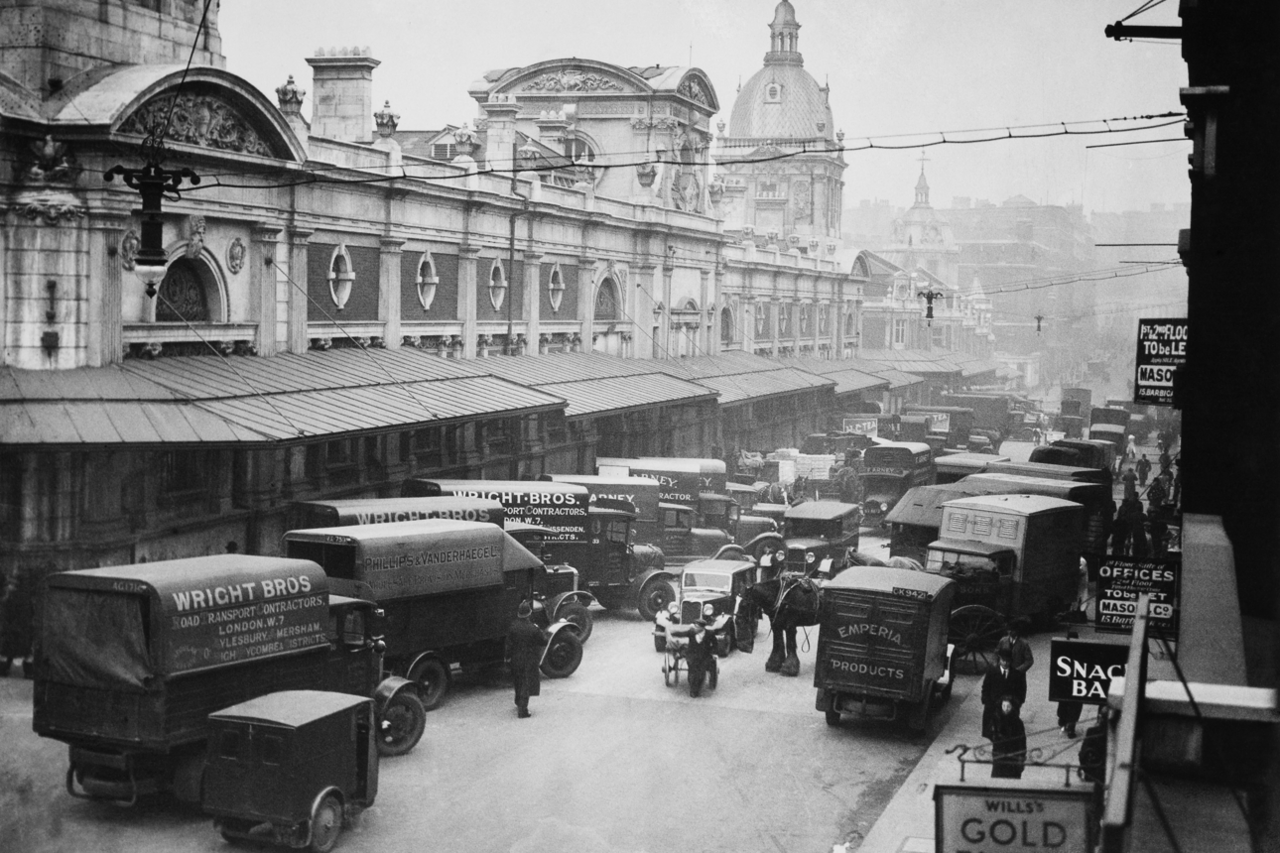
Smithfield buyers include butchers, restaurateurs and caterers, as well as members of the public
The market survived major fires and being bombed during World War Two but fell into decline during the second half of the 20th Century as circumstances changed, with less meat arriving at London's docks, and supermarkets buying directly from distributors.
By the 1990s, parts of the market had been abandoned and fell into disrepair. Now, only the East and West Market buildings are in use with 42 trading premises inside them, compared with the 162 stalls for which just those two buildings had been originally designed.
Even so, more than 100,000 tonnes of meat products pass through Smithfield each year, according to the Corporation of London.

Billingsgate Market porters used to wear a distinctive flat-topped leather hat upon which they would carry produce
Billingsgate Market has a similarly long history, developing from an open-air medieval market on the banks of the Thames in the Square Mile to a bustling warehouse in Poplar near Canary Wharf.
While these days it is the largest inland fish market in the UK, Billingsgate began as a place to buy various goods, from corn, coal and iron, to wine, salt and fish.
The 16th Century saw the market move to sell fish exclusively and in 1699 Parliament passed an act creating "a free and open market for all sorts of fish" - that is apart from eels, the sale of which was reserved for Dutch fishermen alone as a favour for helping feed Londoners during the Great Fire of 1666.
Until about 1840, fish and seafood were sold from sheds around the dock but with an increasing amount of produce to deal with, a purpose-built market was constructed on Lower Thames Street.
This soon proved inadequate and made way for a new building - this another elaborate design by Horace Jones - which opened in 1876.
The BBC's Nationwide reported from Billingsgate Market on the day it opened in Poplar in 1982
Among those to grace its stalls were George Orwell, the notorious Kray twins and comedian Micky Flanagan, who worked as a fish porter when he was a teenager - not that he lasted long in the role.
"It was hard, it was an early start, freezing cold, putting on damp clothes, delivering fish in the rain, your hands used to really hurt from the ice - it wasn't for me," he told Kirsty Young on Desert Island Discs.
With the market running out of space and complaints about the smell of fish wafting over the UK's financial hub, a 13-acre purpose-built site was opened in Poplar in 1982.
The BBC's Chris Lowe was there for what proved to be a fractious first morning, with traders complaining it was "chaos" and "a disaster" - and not only because "there's no tea-shops open".
Lowe himself berated the fact there was "no smoked salmon to be found anywhere".
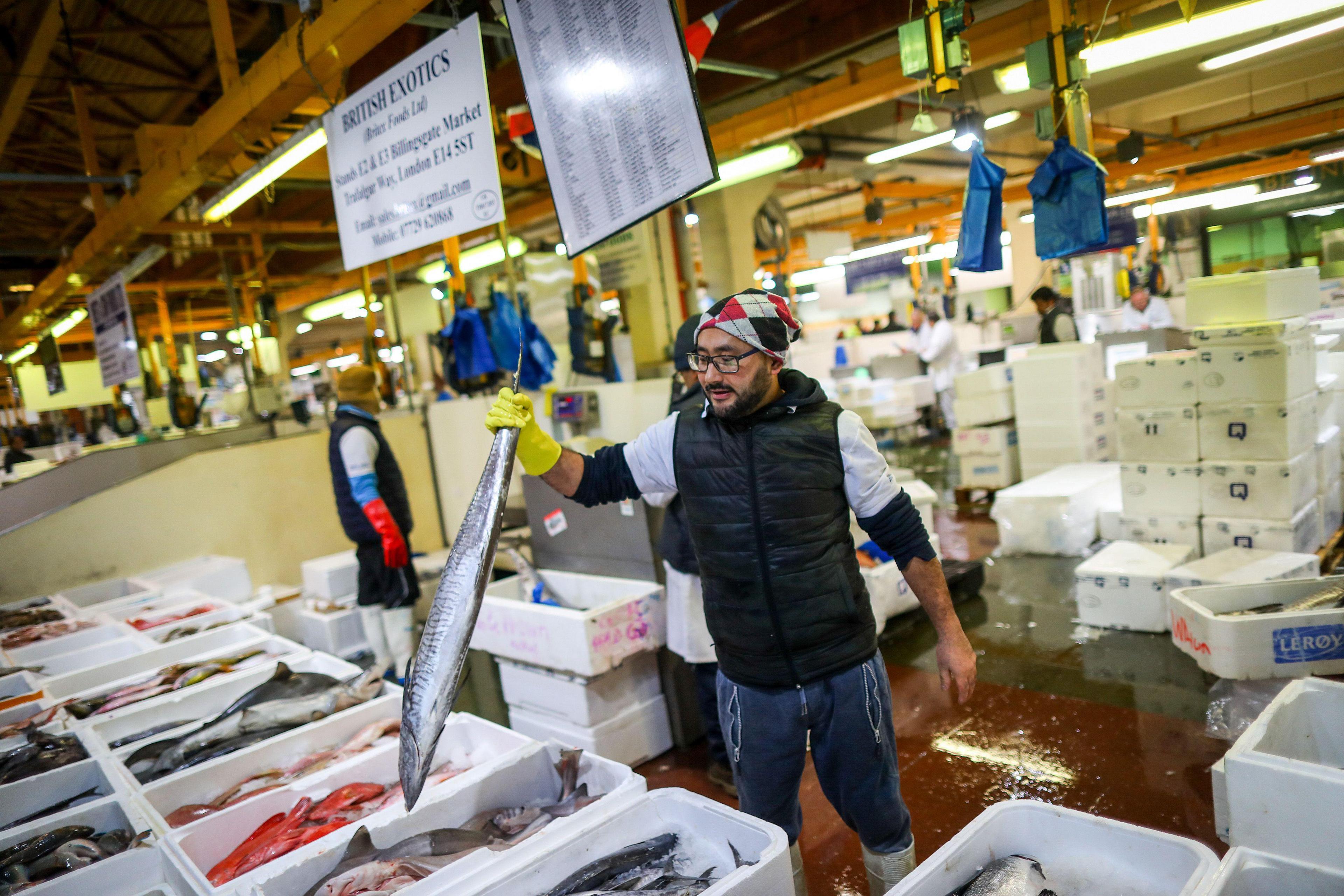
Billingsgate is served by nearly every UK port, with most fish transported directly from the coast by road
The large trading hall made up of nearly 100 stands and 30 shops handles some 25,000 tonnes of fish and fish products each year.
The corporation's vote to withdraw its support follows an abandoned attempt to move both Billingsgate and Smithfield out to Dagenham along with the New Spitalfields horticultural market.
While some hope a new fish market could be opened elsewhere, as with Smithfield the decision signals the end of the City's centuries of involvement.
On Tuesday morning, even before the corporation's vote took place, one Billingsgate worker told BBC London the writing was already on the wall as "it's all about the money now".
"It just means another tradition that will go in London."
Listen to the best of BBC Radio London on Sounds and follow BBC London on Facebook, external, X, external and Instagram, external. Send your story ideas to hello.bbclondon@bbc.co.uk, external
Related topics
- Published27 November 2024
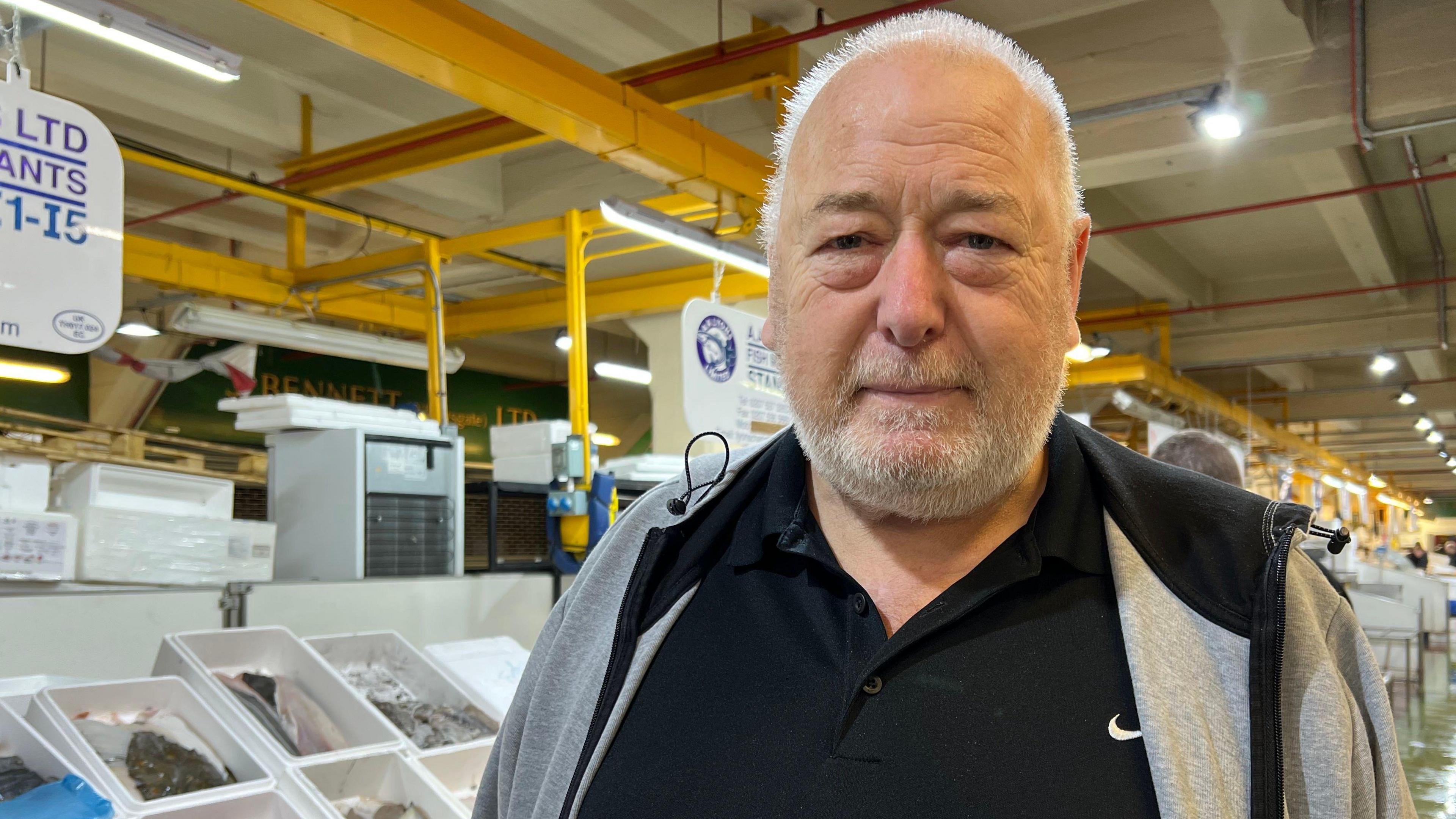
- Published26 November 2024
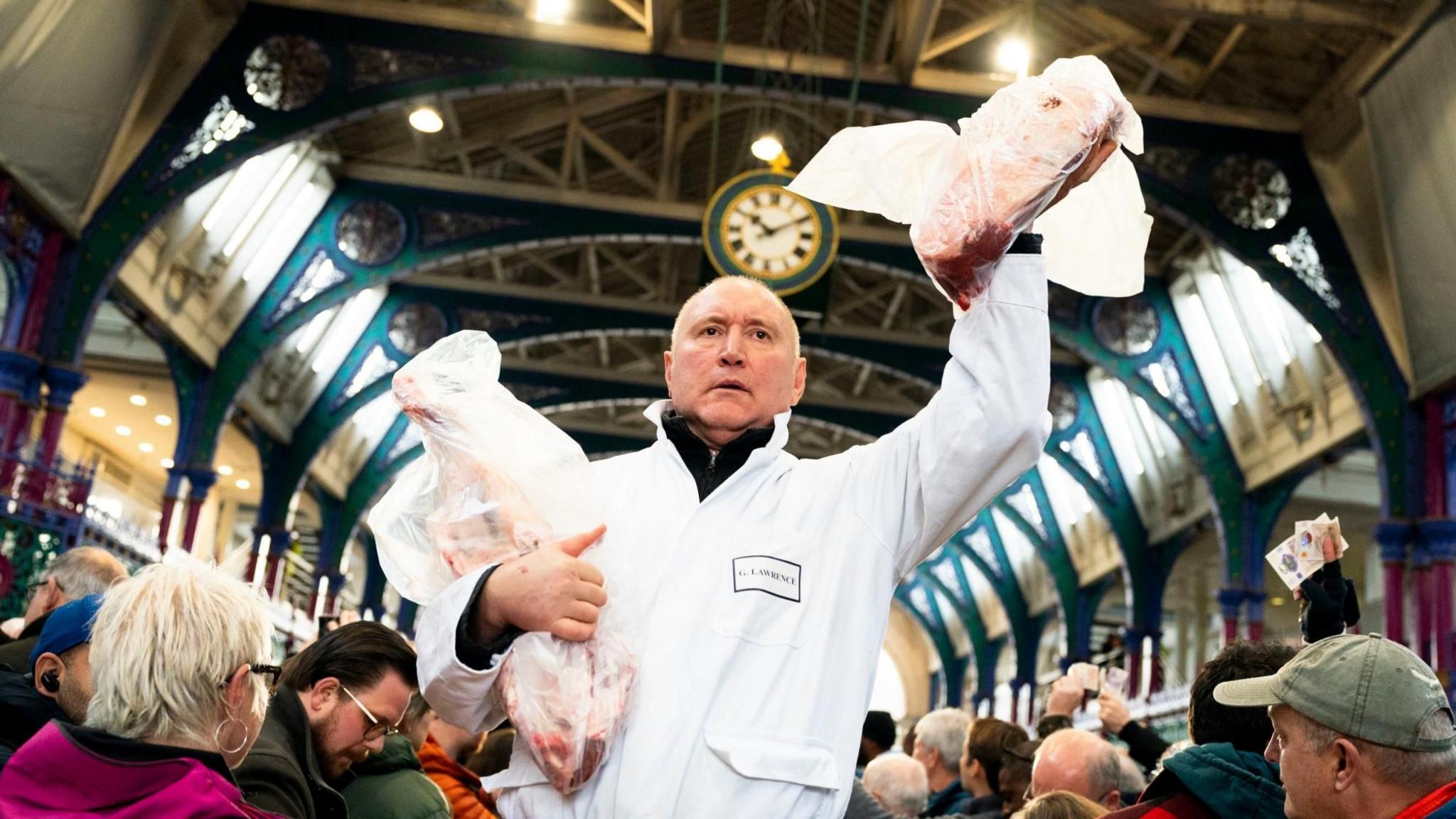
- Published8 November 2024
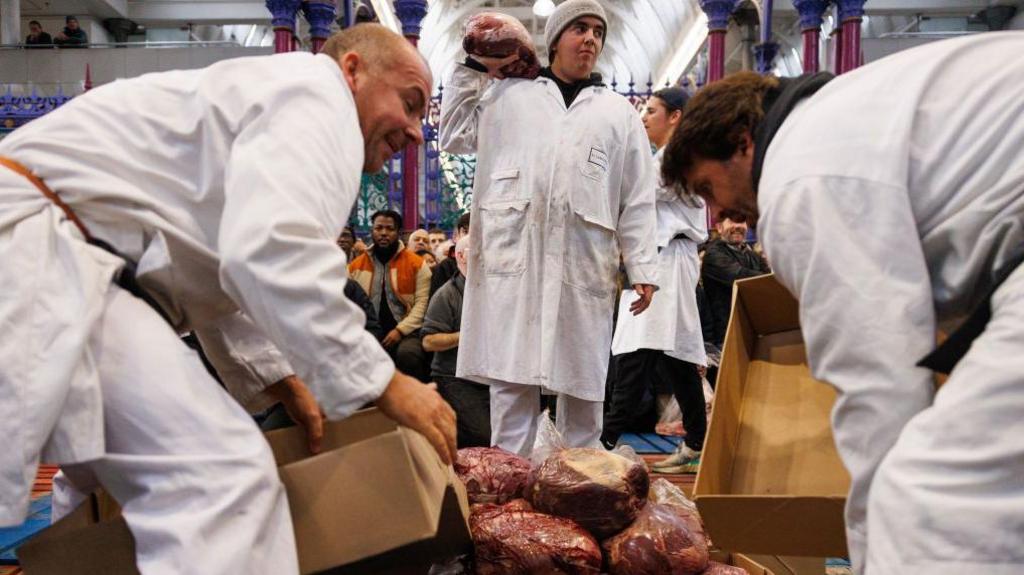
- Published7 March 2024
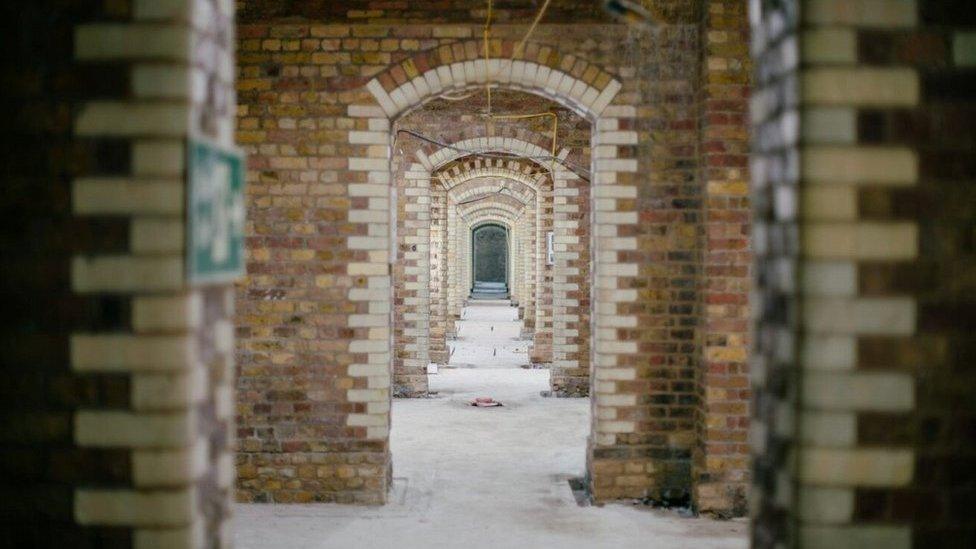
- Published23 December 2023
